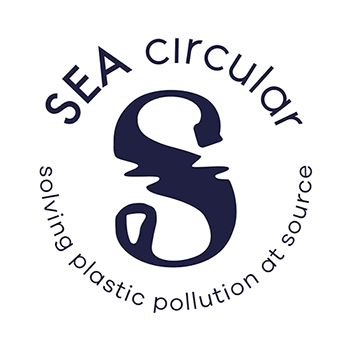
The Philippines is one of the world’s worst offenders on marine plastic pollution, with 0.28 – 0.75 million tonnes per year of plastic entering to oceans from coastal areas in Manila Bay. The country uses almost 60 billion sachets a year (GAIA, March 2020). Economic growth, combined with enhanced production and consumption, is leading to higher waste generation in Philippines.
Causes and challenges
The plastic market in Philippines is above 1283.71 million US$ (2016), with a compounded annual growth rate of 6.11% (forecast for period 2018-2023). Plastic used for packaging is about 48% (2017), with packaging waste the major contributor to marine litter & plastic pollution. Collection of solid wastes is mostly being managed by the local government unit (LGU). In many areas of the country, local governments lack access to waste collection services and recycling facilities. Where they are available, inefficiencies in collection, transportation, treatment and disposal systems affect wastewater and drainage systems further, leading to marine litter and plastic pollution.
The country’s urban waste collection services cover a range of 80% to 100% of the area, while the ranges are lower from 40% to 85% at the national level. In squatter areas (informal settlement areas), waste is often not collected at all, leading to illegal dumping. Waste thrown into waterways contributes to frequent flooding in the Metro region. This eventually leaks to the marine environment and have negative impacts on revenue-generating nature-based tourism, as well as on the fishing industry. Fishermen have commented that plastics are smothering coral reefs, resulting in lower fish yields and ecosystem-wide impacts.
Socio-economic trends also indicate an annual population growth rate of 1.5%, forecast to grow to a 125.4 million people in 2030, with more than 60% living along the country’s coastline. The confluence of a growing population, rising incomes and consumption, inadequate infrastructure, and weak regulations combine to put the Philippines high on the list of nations with major waste leakage and plastic pollution problems.
Ways forward
Opportunities exist in the country to develop integrated and comprehensive policies and strategies for plastic waste management. This includes enhancing institutional, technical and financial capacities of Local Government Units (LGUs) to manage municipal solid waste, including packaging waste.
In 2018, the DENR earmarked 1.25 billion PhP (23 million US$) out of a national budget of 27 billion PhP (499 million US$) for the environmental protection programme for clean water, air and solid waste management.
The Philippines aims to promote 60% recovery and recycling of plastic by 2030 and offers opportunities for the private sector for technology transfer and assimilation in plastic waste management, particularly for different plastic waste streams. For example, Polystyrene Packaging Council of the Philippines, a group of 21 foam polystyrene producers, has set up a recycling plant. The Philippine Alliance for Recycling and Materials Sustainability (PARMS), a multi-sectoral coalition composed of top consumer goods companies, also plans to build a 25 million PhP (0.46 million US$) recycling facility for sachets in Metro Manila.
Finally, efforts are made to formalise waste picker initiatives as PPP solutions by giving informal recyclers and junk shops concessions to collect or receive materials/ to operate recycling centres (for example in Quezon City).
Download SEA circular Country Profile for the Philippines for more information

